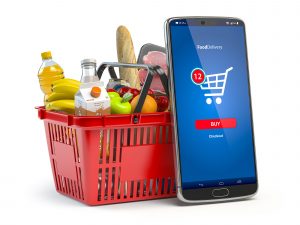Consumer habits have always been an important trend for agriculture and the food industry to follow. While COVID-19 has changed a lot, it has not changed the importance of tracking and understanding consumer trends.
Many consumer trends during this pandemic have centered around food and the food supply chain. While there were disruptions throughout portions of the pandemic, experts believe that panic-buying and shortages have started leveling off for the first time since COVID-19 hit.
However, even though the food system is leveling out, there have been drastic changes to consumer habits and trends. Jessica Adelman, CEO of ESG Results, addressed some of these trends in her recent keynote at the Alltech ONE Virtual Conference.
One such change is surrounding the discussion of food and where food is prepared. “In 2015, for the first time in human history the consumption of food prepared outside the home was greater than the food we prepared in our homes,” Adelman said.

Because of this shift, Quick Service Restaurants (QSR), out of home dining, and grab-and-go items owned the share of the stomach as opposed to the grocery. This trend was trying to keep up with a constantly moving society. Because of COVID-19, social distancing, and self-isolation, people are drastically less in motion, which has led to a large shift in the type of and where food was purchased. According to Adelman, it is projected that in Q2 of 2020, $100 billion will shift back to retail and grocery.
Essentially all of this means people are purchasing more food in the grocery store to prepare at home. According to Nielsen data provided by Adelman, “$18.8 billion was spent on consumer-packaged goods (CPGs) in the month of March alone, which was directly attributable to coronavirus buying.”
People are also talking more about the food they are purchasing. Between March 9 and March 22, there were 710,000 cooking-related tweets, a 60 percent increase from the two weeks prior. In the same time frame, there were 250,000 tweets about ordering and delivery and 80,000 tweets about pizza alone. “This was a huge, seismic, 294 percent increase in talking about food from the previous month,” said Adelman.
The way food is purchased has also been a consumer habit that has changed due to COVID-19. According to Adelman, the UK was previously the largest e-commerce grocery market at 7 percent, and the United States was under 4 percent. Recently the U.S. jumped to 9 percent, and it is projected that it could jump as high as 12 percent.
“Nielsen data stated that e-commerce orders saw a major surge in the month of March, with online orders increasing by 60 percent,” Adelman said.

Customer and user experience are something that retailers, of all sizes and types, have been focused on through the years. However, COVID-19 has brought to light that consumers do not care about the infrastructure behind it. “We just want to know we can get the item we want, in the venue we want, when we want it, for a competitive price,” Adelman said.
This could be beneficial for independent retailers or producers looking to provide food directly to the consumer. Adelman says that making your product easily available for purchase is so important because she predicts that e-commerce will continue to grow.
“Everyone should be trying to get their brands online as fast as possible. They should devote their time and energy to figure out how to ship their products anywhere as safely as possible,” Adelman said.
One consumer trend that Adelman hopes will continue is trusting science.
“It’s been very interesting to watch how COVID-19 has led to a re-appreciation of scientists, science, doctors, and in general, the return of experts,” Adelman said. “We might be at the tipping point where consumers will permit science to re-enter the discussion on agriculture, food and nutrition.”
In terms of including science in our discussion of food Adelman reminds agriculture that it is important to remember that the subject of food is emotional to many people. She says choosing the food we feed our children is not comparable to which type of car to drive.
“Society has been asking emotional questions for the past couple decades about science in food and technology in food,” she said. “We, as an industry, have done kind of a lousy job and only given them scientific answers back. Going forward, I think this [COVID-19] might be the moment when we see those trend lines crossing.”
Why are these habits and consumer trends so important? Because, according to University College in London, it takes an average of 66 days to form a habit. For many, we’re approaching or have already surpassed that mark — meaning that habits and practices formed because of quarantine are starting to cement. Adelman predicts, “We’re going to see consumers begin to blend their new habits with their old routines.”
Michelle Bufkin is a freelance communication specialist whose goal is to help producers bridge the farm-to-plate knowledge gap that exists with consumers today. She uses her full-time position as the Membership and Communication Director at the Arkansas Cattlemen’s Association to interact with producers and work on building that connection.



